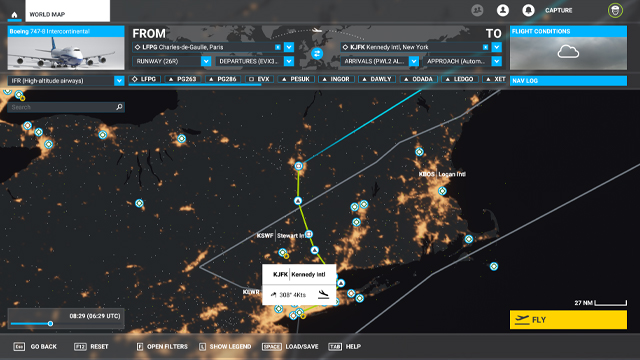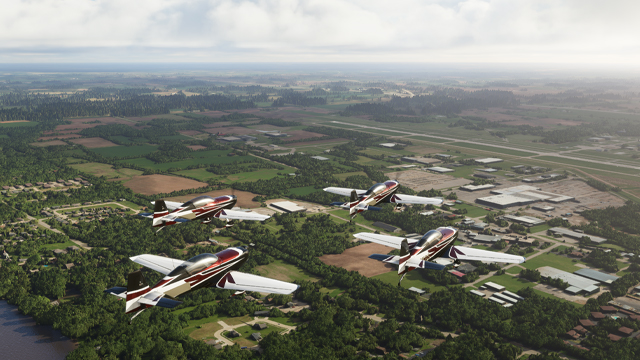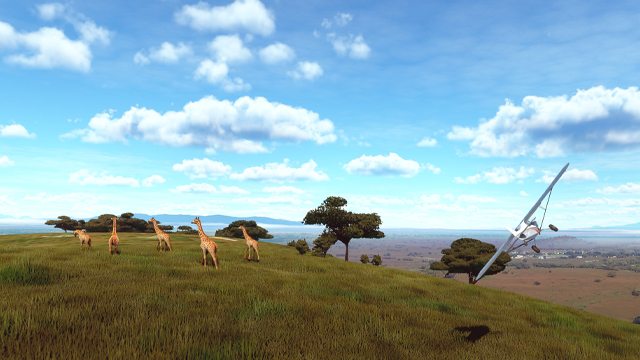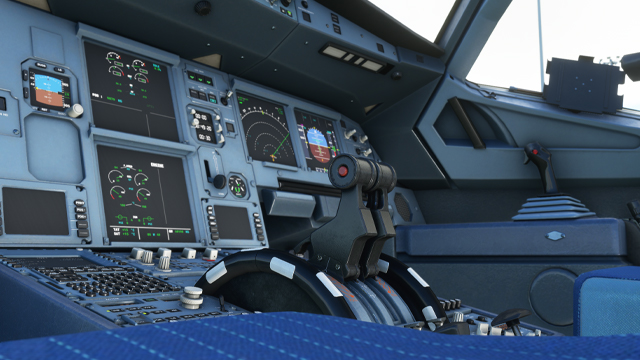Microsoft Flight Simulator 2020 review for PC and Xbox Game Pass.
Flight Simulator 2020 is a daunting prospect for someone like me. I have such a lack of aviation knowledge that it’s almost impressive how little I know about planes. For all I know, aircraft are powered by magic. They are essentially giant baked bean tins with humans trapped inside, propelled through the sky at terrifying speeds so that we can all go to Spain occasionally.
But even for the plane-ly ignorant, it’s clear that Flight Simulator 2020 is a landmark technical achievement. Developer Asobo Studio utilized a combination of Bing Maps and Azure AI to pull in locations and then render them in photorealistic 3D, meaning you can fly around a complete recreation of the entire planet. Yes, really — you can throw down a marker anywhere on Earth, spawn at the marker, and fly above all the cities, greenery, and landmarks in that area.
See it to believe it

It sounds impressive, but seeing it in action is something else. All the notable landmarks are present and correct — you’ll be able to cruise around the Empire State Building and glide above the Eiffel Tower — but it’s the more obscure locations that hammer home Flight Simulator 2020‘s scale. We’ve all seen New York, Paris, and the like recreated in video games, but we’ve never been able to take off from Nepal’s mountainous Lukla Airport, nor have we drifted past the volcanic island of Aogashima. Its scope is genuinely awe-inspiring.
Given that Flight Simulator 2020 contains the entirety of Earth, it’s understandable that some locations look flatter and less impressive than others, and that loading times can be sizable. Some areas have been reliant on AI generation to fill in Bing Maps’ missing pieces, meaning that it isn’t quite an exact recreation of the planet. You may find that your local airport looks more desolate than you remembered, or your local town is a series of grey buildings, but the sheer scope and the number of locations it nails is staggering.
Weathering a storm

The weather effects are another technical achievement. Mid-flight, without skipping a beat, you can move a series of sliders to completely change Flight Simulator 2020‘s climate. This includes choosing the live weather of the region you’re flying in, with it recreating similar conditions to the location you’re visiting, from the time of day through to the types of clouds that are in the sky.
But to get off the ground and start exploring Asobo Studio’s Earth, you’re going to need to learn how to fly. There are eight training missions that provide lengthy explanations of the basics of flight, with Flight Simulator 2020 being so packed with detail that diluting it for a tutorial is a tough task. While these missions got me off the ground, they struggle to convey important and specific details to a newcomer. It felt like a significant information gap between taking off, landing, and then the instructor suddenly letting go of my hand and making me figure out how to find an airport and land on it.
Learning on the job

Much of what I learned while playing was the result of trial and error, with key information coming thick and fast and leaving me routinely stumped in the early stages. You can switch through the difficulty levels to make the experience more realistic or turn it down a notch, but even with the training wheels on, there’s whole bunch of incomprehensible jargon at you. This is going to be appealing to Flight Simulator die-hards, who will be pleased to learn that Asobo hasn’t overlooked the series’ mechanical depth, but is something to keep in mind if you’re looking to be a backseat passenger on your tour around the globe.
This detail extends to the aircraft themselves. There are 20 planes in the base game, each with their own unique look and handling. You can fly in both cockpit view and third-person, and Asobo has clearly invested a great deal of time in making each aircraft feel distinct. Even between categories of planes, such as the behemothic airlines and the nimble jets, there are notable differences that were easy to spot even for a plane plebian like me.
Taking control

While the majority of my time was spent flying around in these planes and exploring, activities provide an extra challenge with online leaderboards charting your high scores. Some challenges require you to stick a perfect landing, while others see you flying through dangerous weather conditions, and live weekly activities rotate new challenges to take part in. While I didn’t get the chance to try it out considering the game wasn’t available to the public while I was playing it, Flight Simulator 2020 is also playable in multiplayer, with you able to spot players who are in close proximity to you and fly alongside them.
You will have to be prepared to utilize both a controller (or preferably a flight stick) and your keyboard to play Flight Simulator 2020. Controlling a plane with a mouse and keyboard is so inefficient that it verges on useless, with the Num Pad used to steer the plane being imprecise and cumbersome. While it’s a lot to digest, mastering the intricacies of flight is satisfying. It feels like a real achievement to progress to the point where you’re taking off and landing with ease, and as I started to fly further afield and become comfortable with long-distance flights, each new play session felt like embarking on a new adventure.
And that’s the beauty of Flight Simulator 2020 — all the technical breakthroughs have combined to create one big celebration of our planet and all the wonders tucked inside of it. Whether I was trying to spot my house while flying over my city, or I was throwing a marker down on a mysterious island to just see what it looked like, there was always something new to be awe-struck by.
Flight Simulator 2020 Review | The Final Verdict
Asobo Studio has created something truly impressive with Flight Simulator 2020. Over the past few years, we’ve seen games from Red Dead Redemption 2 to The Last of Us 2 push the envelope in terms of what games can achieve visually. But Asobo’s work with Azure feels like something we’ve never seen before — a true next-gen step forward that realizes the potential of cloud-based gaming more than any other game before it.







